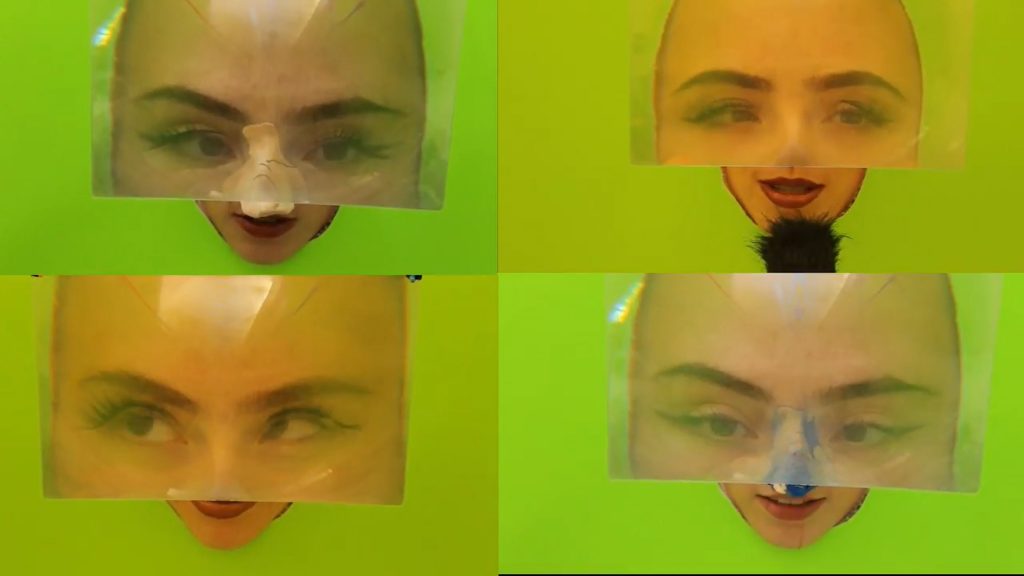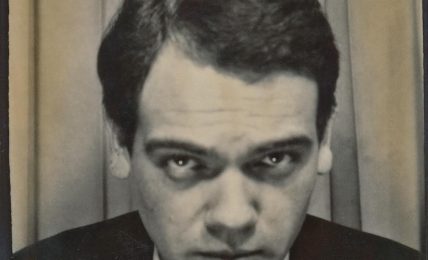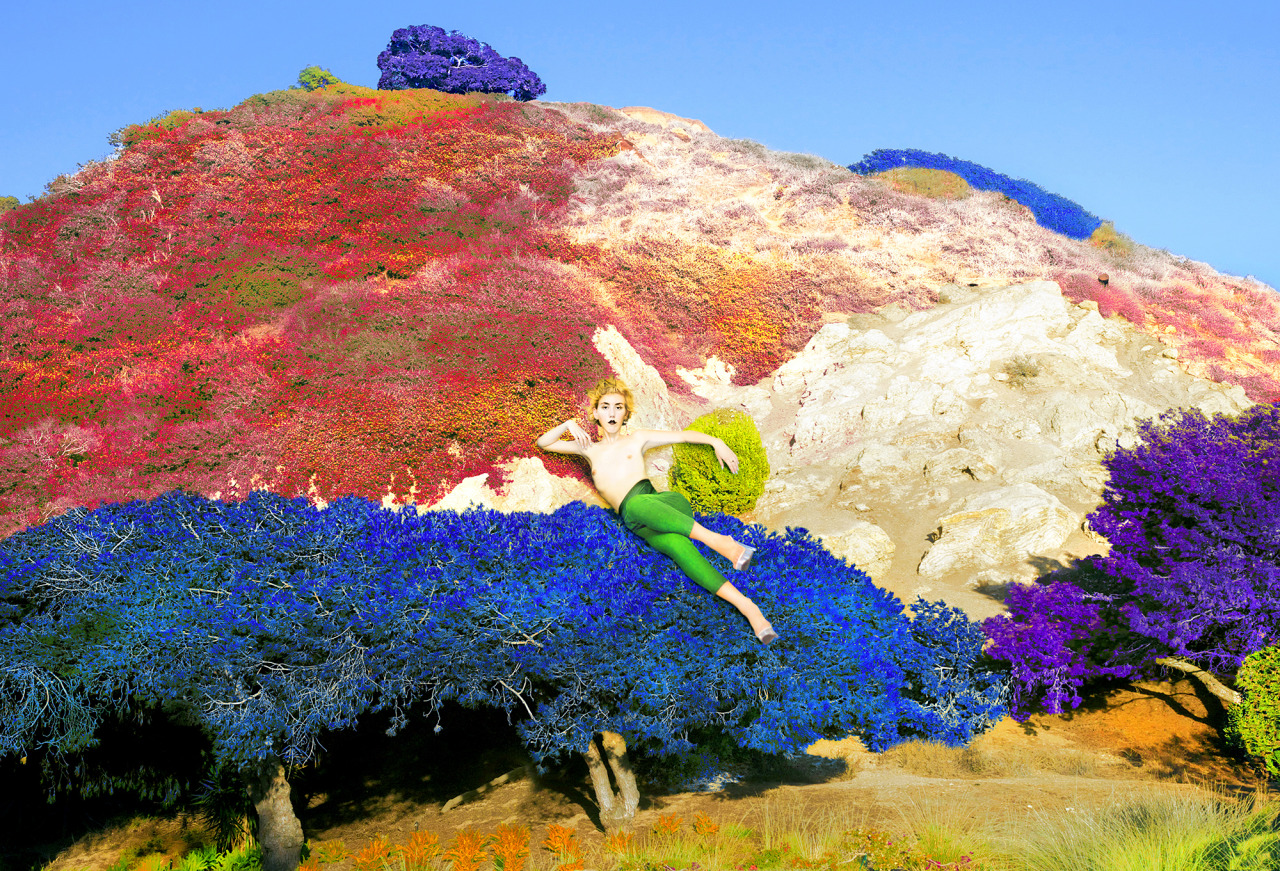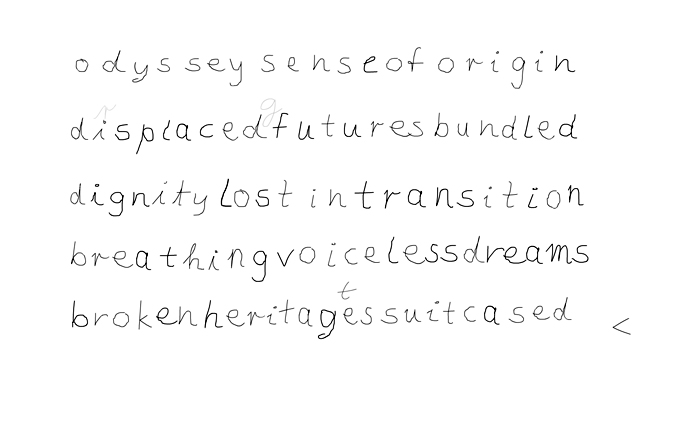Dahlia Bloomstone is a 24-year-old Puerto Rican / American artist and second-year MFA at Hunter College with a BFA from Bard College. In her video piece Financial accessibility to calm our apocalyptic anxieties (2020), Bloomstone explores how teeth and eye color indicate a lack of social care for the vulnerable while also forcing us to question the gross inadequacy of the charity-reliant American system.
:::
DigA: In Financial accessibility to calm our apocalyptic anxieties, you take on the issue of American financial accessibility in an unforeseen way. What inspired you to explore this topic?
DB: I have always been interested in representing morality in art and the way popular media presents philanthropy culture. Anecdotally, while working in an NYC strip club near the financial district, I frequently met men who felt the need to discuss the stock market with entirely inaccessible language. These niche experiences lead me to question the people who hold onto this information. A systemic problem exists in America, where isolated information keeps the rich richer and the lower class where they are. This system could provide but instead relies on charity. As an artist, can I provide this knowledge using different media as the American system does not adequately provide this information to all equally? Can I pretend to be wealthy to create wealth for others? These initial thoughts generated the apocalyptic financial folktale.
DigA: The piece revolves around an animated woman who is experiencing the physical indicators of poverty and malnutrition. Can you talk about the process of creating this character?
DB: The character is bodied in different ways. The real image of a woman is used to create the 3D render, which is then edited and manipulated. The physicalizing of poverty and malnutrition are represented by tooth loss and ocular color change. I imagined there to be a covering or masking of those issues. Through animation, the character has layers of obscuring.
With this in mind, the character looks synthetic and feminine, with long eyelashes and a blonde wig, which I already had. I was thinking about how it is ingrained in American society that we blame the impoverished for their position. Thus, the character had to be unheroic. With the character’s deranged conscience, she, regardless of trying to hide within capitalistic beauty standards, is frustratingly helpless and blamed for not doing enough good.
DigA: You describe a woman in one of the “supplementary information” prints who hides gold in her hair and then replaces it with a rock once the gold is stolen, which ultimately “makes no difference” to the women. Can you discuss the relationship between the prints and the video?
DB: The prints were made available next to the video as didactic “supplementary information.” The printed matter was to service the digital matter. These materials contain a transcript of the aforementioned inaccessible stock market gibberish, which is audible in the video. Our economic reality is absurd. How can I puncture and shape this absurdity in a tangible way? I was thinking of questions like Who has access to help or advice with their finances during the apocalypse? How do we counteract this American consumerism? Who has access to keep their finances safe? Of course, we know that the people who already have (a lot of) money have this information. There is factual material, like stock advice, compounded by a somewhat practical fable or “financial folktale” that could exist in the video’s world.
A systemic problem exists in America, where isolated information keeps the rich richer and the lower class where they are. This system could provide, but instead relies on charity. Can I, as an artist, provide this knowledge using different media as the American system does not adequately provide this information to all equally?
DigA: The complimentary audio behind the visual consists of a woman humming, ticking noises, and partial recordings of the supplementary prints’ dialogue. What was your process for incorporating these sounds into the piece?
DB: First, there was the secretly recorded sound of the finance man. The near incoherent jargon goes on for 30 minutes without me saying a word. From transcribing it, I learned nothing. Editing the sound and adding it to the parable world of critique felt right. He isn’t edited to speak loudly or over the other sounds. His sound does not have a moment of punctuation.
I then recorded myself and distorted the sounds of me humming, typing, and brushing hair. You can’t hear my restlessness listening to this man talk, but I hoped to get the possible sounds of anxious powerlessness, a futuristic Greek tragedy quality.
DigA: Apocalyptic talk is trending—with the fires in California, climate change, the rise of populism, social justice, and on and on. How do you define apocalyptic thinking in 2020?
DB: I think that you cannot separate talking about the apocalypse from talking about marginalized groups. When thinking about the apocalypse, you have to think about who you can protect when it happens or how you can help. If all you can do is pretend to be wealthy to create wealth to provide that wealth for others during the apocalyptic event, then that might be okay. There is an exasperated call to donate to charity in the video. In the financial folktale about the woman and her wig, you learn the lesson that keeping your gold for yourself and doing nothing with it is a regrettable action. It is apocalyptic to think about fiscal conservatism.
DigA: As a result of the current pandemic, our country faces mass unemployment and poverty rates. How do you think your piece reflects these topical issues and relates to the economic effects of COVID-19?
DB: The work aims to reflect the apocalyptic quality of what is happening in our country. Again, it is apocalyptic to witness the realities of fiscal conservatism, racial disparities in healthcare, health equity, and to think about the people who are more afraid of higher taxes over people’s lives and women’s rights. When interacting with this piece, I hope that people will consider survival tactics and the power they have, if any, to dismantle the system at work. If you have enough resources, how are you working to subvert these constructs at an individual level? I want to work through violence and negligence.
DigA: Much of your work consists of various animations, performances, and parody videos, including “Beauty and Plastic Surgery Guru” (video link removed by artist) and “Club Manager Performance Interview.” Do you see a relationship between your pieces? Are they building from one another?
DB: I think the pieces build from one another. On some level, there is always a focus on critiquing and exposing private worlds, consumerism, and subversion. There is consistent communication between works with respect to using internet vernacular and some form of a fictional character.

DigA: You state that your work usually ends up on YouTube for everyone to view and for people to “leave a comment that they did not enjoy the video.” Viewing through a certain post-internet art lens, the comments could be seen as part of the work. How do you interpret unsolicited comments from viewers? What is your ideal platform for these pieces?
DB: The negative comments were printed and incorporated into a work that operated as a Google analytics book. The few unsolicited remarks from viewers are a part of the democratic quality of the pieces. I like ongoing participation. If they comment, I like thinking about what other videos the algorithm will recommend to them. Beauty Guru videos? Videos of famous YouTube stars donating to charity? It would be great to co-opt spaces that financial news occupies. I could adapt the work using more even more official language to participate and puncture that system. I still don’t know if the videos need to be pervasive. The pieces could reach their full potential in a New York financial institution.
Check out Dahlia Bloomstone’s Financial accessibility to calm our apocalyptic anxieties.
:::
 Dahlia Bloomstone is a 24-year-old Puerto Rican / American artist and second-year MFA at Hunter College with a BFA from Bard College. With some political urgency and a lightweight camcorder, she creates accessible video content that leads to difficult questions. Many of these questions investigate virtue in art, philanthropy culture, the selling of physical identity, memorializing familial systems, exposing private worlds, and even being a loser on the internet (and post-internet). She often uses role-play, pop culture vernacular, parody, animation, and artifice as conceptual devices. Most recently, her projects have included computer programming, allowing for close communication with browsers. Her videos usually end up on her favorite unifying and democratic platform, YouTube. Anyone can stumble upon “The Lonely Dancer (Censored Version),” or “Financial Accessibility to Calm our Apocalyptic Anxieties”, or “Finding My Identity Under the Guise of Selling Baked Goods for Puerto Rico”, and leave a comment that they did not enjoy the video.
Dahlia Bloomstone is a 24-year-old Puerto Rican / American artist and second-year MFA at Hunter College with a BFA from Bard College. With some political urgency and a lightweight camcorder, she creates accessible video content that leads to difficult questions. Many of these questions investigate virtue in art, philanthropy culture, the selling of physical identity, memorializing familial systems, exposing private worlds, and even being a loser on the internet (and post-internet). She often uses role-play, pop culture vernacular, parody, animation, and artifice as conceptual devices. Most recently, her projects have included computer programming, allowing for close communication with browsers. Her videos usually end up on her favorite unifying and democratic platform, YouTube. Anyone can stumble upon “The Lonely Dancer (Censored Version),” or “Financial Accessibility to Calm our Apocalyptic Anxieties”, or “Finding My Identity Under the Guise of Selling Baked Goods for Puerto Rico”, and leave a comment that they did not enjoy the video.
Check out Dahlia’s channel here.



